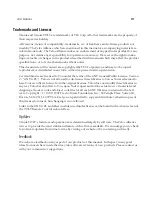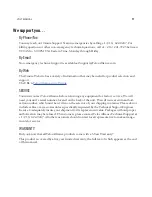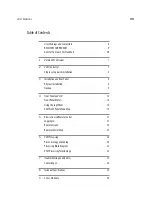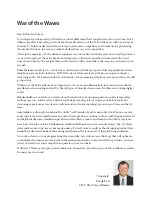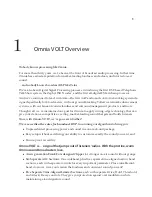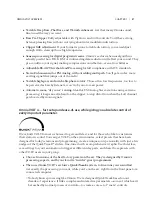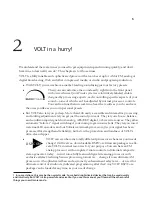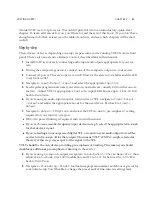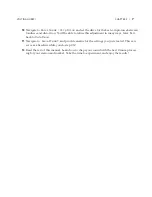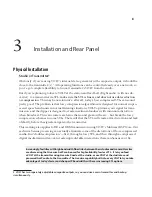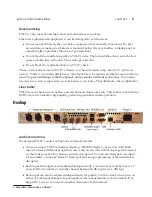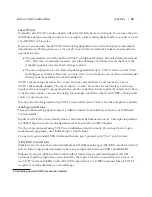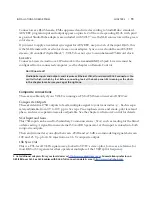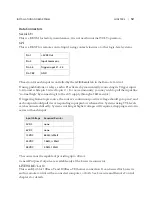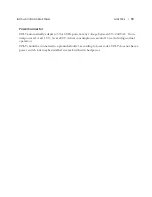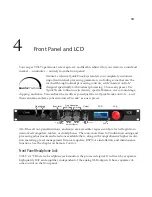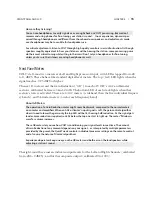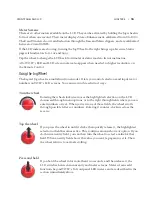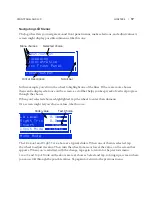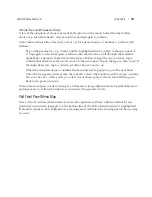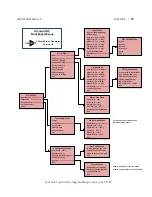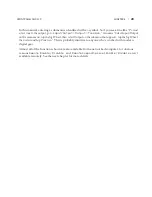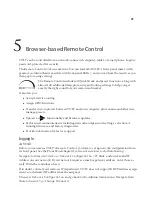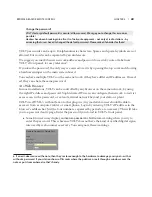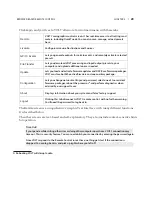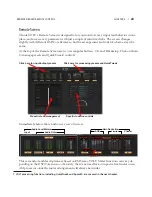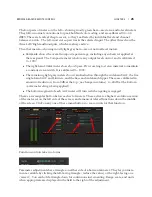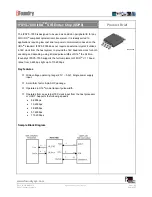
Insert Point
Normally, all of VOLT’s audio outputs will carry the fully processed output. You can use them to
distribute analog to nearby monitors, for example, while sending digital audio to a control room
via AES/EBU or Livewire.
However, you can also break VOLT’s internal signal path for use with a third party watermark
identification or EAS generator, or for our 25-Seven Voltair watermark enhancement and man-
agement system.
♦
The external device will be fed from VOLT’s multiband Limiter, after all enhancement and
AGC. This way, watermark encoders can take advantage of Omnia presets that boost the
critical frequencies for electronic ratings systems.
♦
The external generator or Voltair output is applied directly to VOLT’s drive control of the
final clipper or limiter4. This way, you don’t have to worry about an encoder’s added signal
driving your transmitter into overmodulation.
VOLT’s insert output becomes the “send” for your external device, and can be any one of
VOLT’s three
audio outputs.
The insert input (“return” from the external device) can be any
input you’re not using for program stream or failover backup. Insert input and output don’t have
to be the same mode—one can be analog, for example, while the other is AES/EBU—though this
rarely occurs in practice.
Insert points are designated using VOLT’s network Remote Control. See that chapter for details.
Analog connections
These are balanced input and output, +4 dBu nominal. At nominal level, there is +18 dB head-
room available.
Inputs can be fed from any transformer or electronically balanced sources. The input impedance
is 10k
Ω
. Outputs are electronically balanced, for any load of 600
Ω
or higher.
We do not recommend using VOLT in an unbalanced environment. If you must hook it up to
unbalanced equipment, use a buffer amp or transformer.
Connectors are standard XLR-3 male and female: pin 1 ground, pin 2 “hot”, pin 3 return.
AES/EBU connections
Input
is stereo, transformer isolated and balanced 110
Ω
nominal per AES/EBU standard, with 24
bit resolution. Input automatically locks to any sample rate between 32 kHz and
108 kHz
.
Output
is stereo per AES3 professional standard, transformer isolated and balanced 110
Ω
nominal. Output sample rate can be locked to the input, locked to an external sync source, or
use VOLT’s internal 48 kHz clock. AES/EBU output level is -18 dBFS nominal; like all VOLT’s
outputs, it can be adjusted over a 24 dB range.
4 Depending on which DSP|Core version is loaded.
CHAPTER 3 |
10
INSTALLATION AND REAR PANEL
Summary of Contents for Volt
Page 40: ...CHAPTER 6 32 VOLT PROCESSING...

